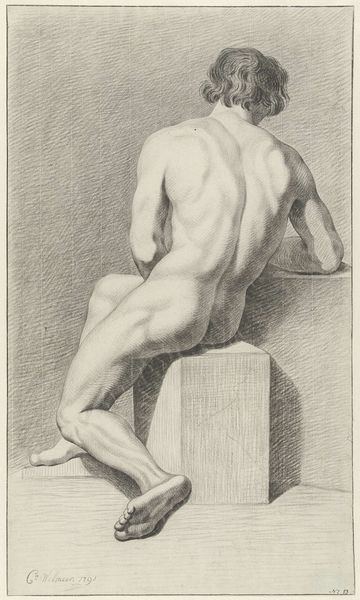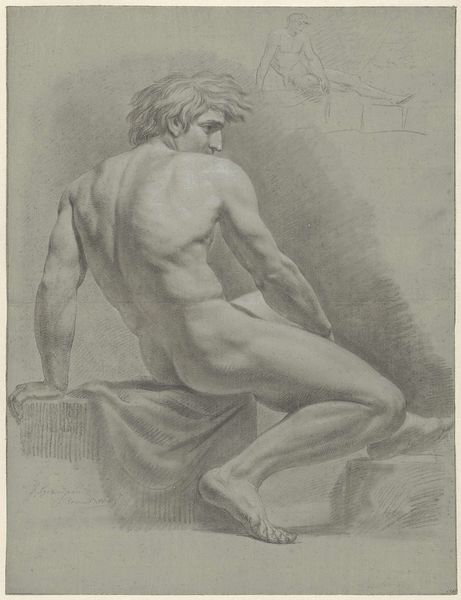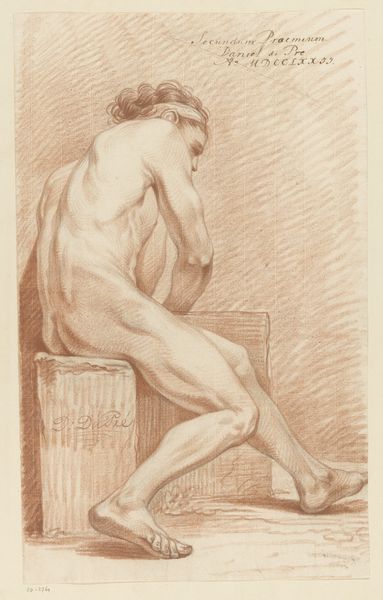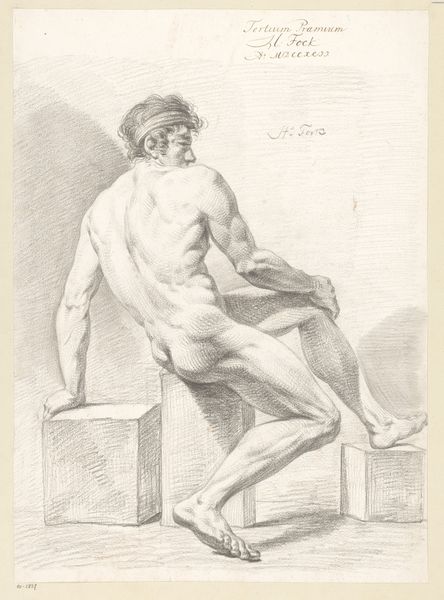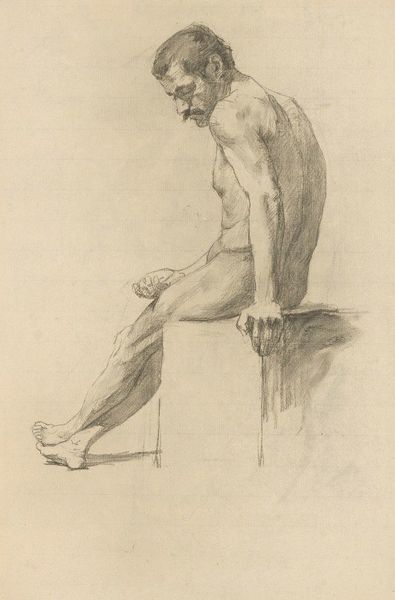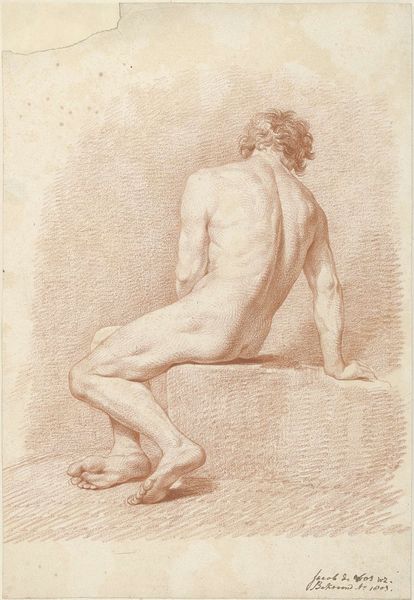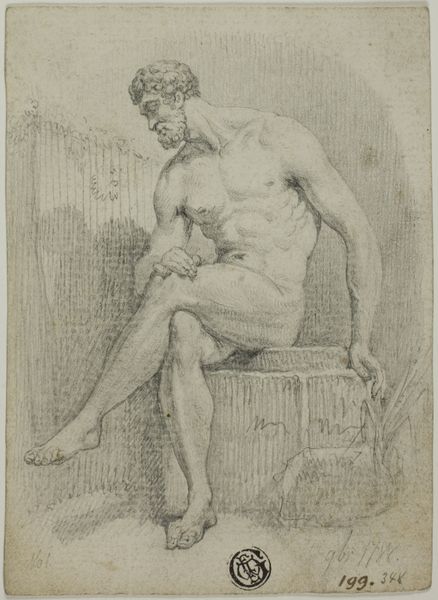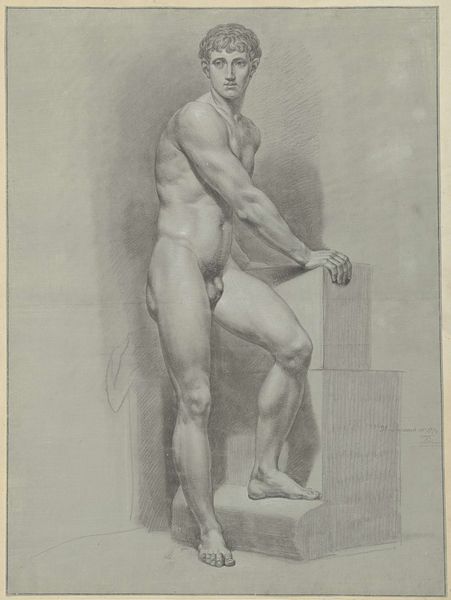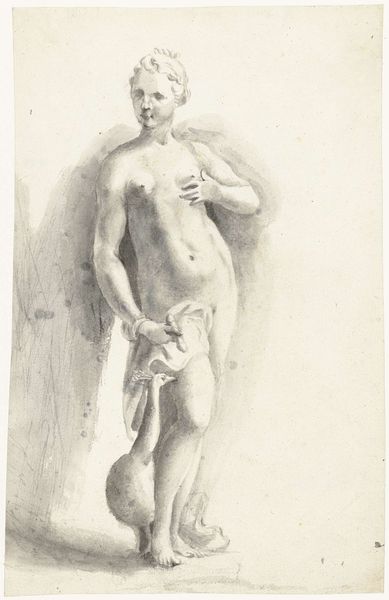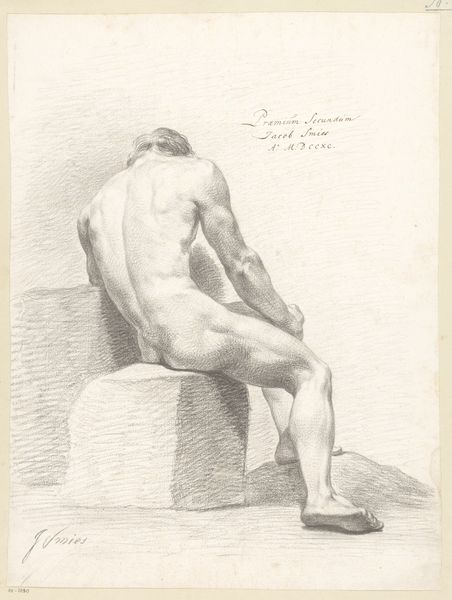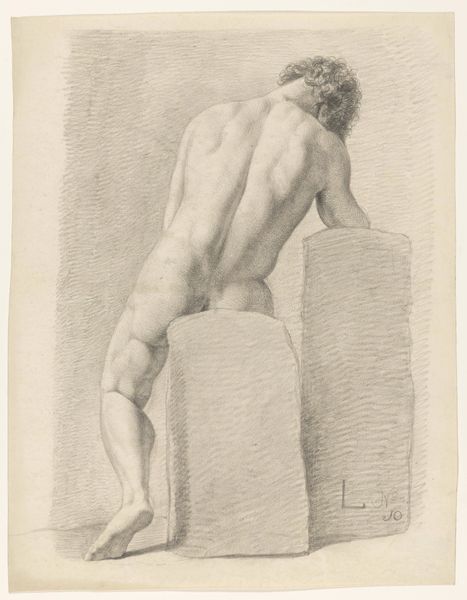
drawing, graphite
#
pencil drawn
#
drawing
#
pencil sketch
#
charcoal drawing
#
pencil drawing
#
graphite
#
academic-art
#
nude
#
realism
Dimensions: height 468 mm, width 349 mm
Copyright: Rijks Museum: Open Domain
Curator: Let's discuss Jean Grandjean’s "Zittend mannelijk naakt, op een blok, half gedraaid," created between 1765 and 1781. It’s rendered in graphite and drawing. Editor: Looking at this drawing, I’m struck by the pose – the way the figure twists, it feels both relaxed and a little uncomfortable. What catches your eye? Curator: The materiality itself is interesting. Think about graphite as a substance, its extraction, refinement, and distribution. Grandjean uses a relatively inexpensive material, graphite, and turns it into a study, likely for a larger, more “important” piece. Is he elevating the material or simply using what's at hand in his studio? How does this act of choosing to make 'art' using graphite change traditional material hierarchies? Editor: That’s a fascinating way to look at it. I hadn't considered the social context embedded in the very choice of material. Was graphite a common material for academic studies at the time? Curator: Exactly! The "academic art" style emphasizes particular skills that needed specific tools and processes for development. Graphite was practical but maybe considered less prestigious than ink or chalk. This raises questions about artistic training: Where did he get his materials? Who was afforded access to the "finer" materials and why? Does this humble material affect our reading of the subject? Would the pose convey something different if executed in oil paint on canvas? Editor: So by considering the "how" and "with what," we see the piece less as just a classical nude and more as an object shaped by its production? Curator: Precisely. We start questioning not just the skill but also the societal forces influencing artmaking itself. It urges us to acknowledge artistic choices as fundamentally connected to the economics and social contexts of art. Editor: I'm starting to see art history in a completely new way now, beyond just the images themselves. Curator: It encourages a wider perspective – one that recognizes material culture as actively involved in creating art, offering space to scrutinize traditional practices and perhaps question our established art frameworks.
Comments
No comments
Be the first to comment and join the conversation on the ultimate creative platform.
